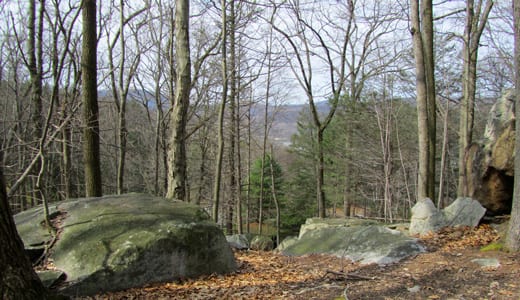MANITOGA
Russel Wright’s Song of Nature & Design
Garrison, New York
From 1942 to 1976 renowned mid-century modern designer Russel Wright shaped a former quarry and remnant woodland into a forest garden for experiencing nature and aesthetic effects. The design approach developed a series of paths, each with specific effects articulated for seasons, time of day, quality of light, and changing weather. In his 1970 essay “A Garden of Woodland Paths” Wright states, “I like to give each of my paths a theme” and offers a few suggestions:
“A Morning Path leading toward the east so that the sun shines through the trees as you walk.
A Sunset Path leading toward the west, if possible with a sit-down place for watching the setting sun.
A Springtime Path that shows off the wildflowers that bloom in the spring.
An Autumn Path that will show off the great variety of fall color in your trees and shrubs.
A Winter Walk which is predominantly evergreen.”

Today we are analyzing the changed character of Wright’s “Apowquamis”, a tree-sheltered path in the Algonquin language of the local Lenape. Also known as the Winter Path and Morning Walk, Wright transformed an old logging road along a small stream into one of 35 focal woodland garden features. Far from merely connecting his Studio with the distant Lost Pond, the path was a twisting experiential circuit rife with intentional surprises. He contrasted a path surface of rustling leaves in a tunnel of eastern hemlocks with the deliberate placement of stepping stones to pace across a managed fern glen. Wright orchestrated intimate aspects of the trail, from specific places to hear birdsongs to locations where wild grape vines can be swung across the river, for multiple experiences along the way. In terms of views, he created windows into and beyond the forest itself. The pruning of trailside portals through evergreen boughs offered nearby glimpses of nature at work. He also framed mid and long range views into the Hudson River Valley at outlooks called “Osios”, a beautiful view in the Algonquin. One such view is the western overlook, from which visitors can crawl across a group of carefully cleaned, sculptural boulders to view the setting of the sun, in a tactile and visual experience. Wright believed such encounters with place would elevate the mind and soul of people in order to help them later focus on the recurrent challenges of daily life.
An act of proto-restoration, Wright’s garden developed at the time of the country’s awakening to the dangers of pesticides and pollution and expresses his attempt to reconnect modern life and the natural world through his reclaimed gardens. Some 33 years later, the educational-focused non-profit Russel Wright Design Center is collaborating with Heritage Landscapes on a Manitoga historic landscape report.